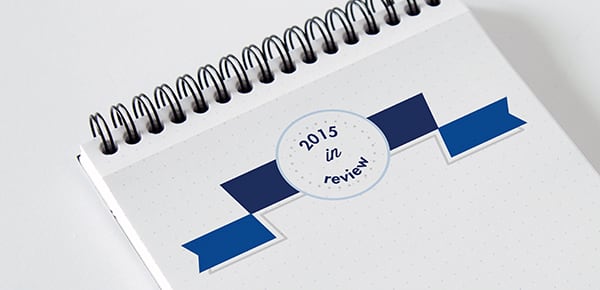


















In this post, we share some of the trends and milestones that mattered most to us in 2015, and dust off our crystal ball for a sneak peek at 2016.
For the genomics community, 2015 kicked off with a bang: in the US, President Obama announced the Precision Medicine Initiative, a federal initiative showing buy-in at the highest level for the goal of tailoring treatments to patients. On a related note, 23andMe this year earned the first-ever approval from FDA for a direct-to-consumer genetic test. Consumer interest in genetic data is the other half of the precision medicine equation, and companies like 23andMe have demonstrated in recent years that people are fascinated by how DNA information could help them lead healthier lives.
One of our favorite stories of 2015 was the much-buzzed-about PLoS Biology publication predicting that genomics would be the biggest data generator in the world in just 10 years, eclipsing data heavyweights like astronomy and social media. We sometimes have to take a moment to consider just how quickly data production has ramped up. Where we used to mail hard drives around, we now rely on cloud-based resources to manage the petabytes of genomic data scientists work with all over the world. The PLoS publication served not only to make people aware of the rapidly increasing data production in genomics, but also to spur interest in finding ways to make sure that our data management, storage, and analysis processes are ready for the coming strain on the system.
This year also saw the launch of the Allele Frequency Community (AFC), a freely accessible data-sharing group that we are proud to have helped found. AFC is designed to help scientists and clinicians interpret DNA variants more accurately by facilitating the sharing of allele-frequency metrics from populations that may be underrepresented in public databases. In the months since AFC got started, many more members joined and the number of included datasets grew impressively.
Throughout 2015, we were honored to have the opportunity to profile the fabulous work of several of our customers. If you haven’t seen them, we encourage you to check out their stories — these scientists are responsible for some really impressive achievements:
Thomas Hampton, Dartmouth College
Rajini Haraksingh, Stanford University and Rare Genomics Institute
Yuval Itan, Rockefeller University
Alistair Pagnamenta, University of Oxford
Cliff Tepper, University of California, Davis
Hywel Williams, University College London
Looking ahead to 2016, we anticipate seeing even greater pressure to develop streamlined genomic workflows, including push-button data analysis and interpretation. There is tremendous need to help clinical geneticists and other lab members process genomic data more quickly — after all, they’re going to be seeing a lot more of it in the near future. To that end, we expanded our QIAGEN Clinical Insight (QCI™) offering this year to cover hereditary cancer as well as somatic cancer, and we plan to add more features in the coming year. In research labs, the emphasis on faster, simpler workflows comes from ever-expanding studies; whether it’s Drosophila or humans, scientists are dramatically increasing the number of organisms they include in research projects to try to gain biological insight. There will be a continuous need for better analysis solutions to make sense of all that data.
From our QIAGEN Bioinformatics team, the best wishes for a prosperous new year!